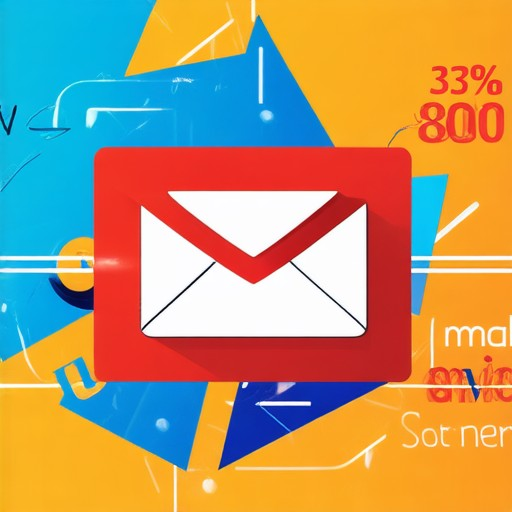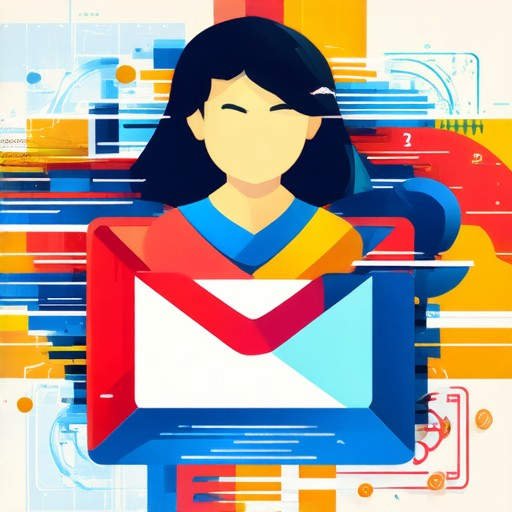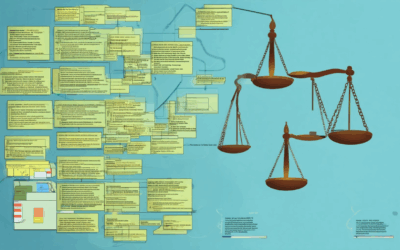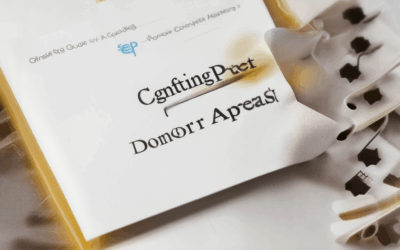Ignite Your Nonprofit Email Marketing Strategy: Top Platforms, Rules, and Free Solutions
Email marketing remains one of the most effective tools for nonprofit organizations to engage donors, volunteers, and supporters. With the right strategy, platforms, and tactics, your nonprofit can achieve higher open rates, increase donations, and build lasting relationships. Whether you’re looking to streamline your operations with Gmail, leverage advanced features from Google, or explore free email marketing options, this guide offers actionable insights to optimize your nonprofit email marketing efforts. From mastering the 33% rule to balancing content types with the 80/20 approach, we’ll walk you through the best practices and tools to elevate your outreach. Discover how to craft compelling fundraising emails, manage donor lists, and stay connected with your audience—all while adhering to ethical guidelines and maximizing impact. This comprehensive overview ensures your nonprofit email marketing strategy is both impactful and aligned with your mission-driven goals.
Key Takeaways
– Gmail for Nonprofits is a free email solution provided through Google Workspace for Nonprofits, offering email hosting, custom domains, and essential features for nonprofit communication.
– Google for Nonprofits provides valuable tools like Google Ads Grants (up to $10,000/month), Gmail, and Google Workspace, making it a cost-effective resource for nonprofits.
– USPS Nonprofit Mail Program offers discounted postage rates starting from 18¢ per piece, ideal for bulk mailings but not entirely free.
– Nonprofits can leverage free email marketing platforms like Gmail to streamline communication and reduce costs.
– Always verify nonprofit eligibility and complete necessary applications to access these benefits.

The Best Email Marketing Platforms for Nonprofits
Email marketing is a powerful tool for nonprofits to engage supporters, fundraise, and stay connected with their communities. Choosing the right platform can significantly impact your organization’s success. Here’s a breakdown of the top options available:
- Mailchimp – Known for its user-friendly interface, Mailchimp is a great choice for nonprofits. It offers customizable email templates, robust analytics, and integrations with popular CRMs like Salesforce. Its free version is ideal for smaller organizations.
- Constant Contact – Specializing in email marketing, Constant Contact provides nonprofit-specific tools such as donation tracking and event marketing. It also offers a free trial for new users.
- AWeber – AWeber is known for its excellent email deliverability rates and automation features. Nonprofits can benefit from its customizable templates and segmentation options.
- DonorPerfect – Tailored for nonprofits, DonorPerfect combines email marketing with donor management tools. It helps organizations track donations and engagement, making it a strong all-in-one solution.
- Givebutter – Ideal for small nonprofits, Givebutter focuses on online donations and event management alongside email marketing. Its free plan is perfect for those just starting out.
Key Features to Look For:
- Customizable email templates
- Integration with CRM systems
- Analytics and reporting tools
- Donation tracking
- Event promotion tools
- Cost-effective pricing
Each platform has unique strengths, so it’s essential to evaluate your organization’s specific needs and budget. Whether you’re looking for a simple solution or a comprehensive tool, these platforms can help you achieve your nonprofit’s goals effectively.
The 33% Rule for Nonprofits
The 33% rule for nonprofits pertains to the percentage of support received from the general public or government entities. Here’s a breakdown:
- Threshold Definition : Nonprofits are categorized based on the percentage of their total support originating from the public or government. Specifically, if an organization receives more than 10% but less than 33.333…% (one-third) of its support from these sources, it may qualify as a public charity under certain conditions.
- Public Charity Classification : To maintain public charity status, the nonprofit must demonstrate that, considering all facts and circumstances, a substantial portion of its support comes from public sources. This is typically documented on IRS Form 990, particularly in Schedule A and Schedule B, which detail contributions and grants.
- Compliance and Consultation : Nonprofits falling into this range should consult tax professionals to ensure compliance with IRS requirements. Proper classification is crucial to avoid penalties and maintain tax-exempt status.
This rule underscores the importance of understanding funding sources and ensuring adherence to IRS guidelines for nonprofits.

The 80/20 Rule in Email Marketing
The 80/20 rule is a strategic principle often applied in email marketing to optimize engagement and results. According to this guideline:
- 80% of your email content should focus on providing value to your subscribers through:
- Education: Sharing valuable insights, tips, or knowledge relevant to your audience.
- Entertainment: Creating engaging content that resonates emotionally or intellectually.
- Problem-Solving: Addressing common challenges or questions your audience faces.
- 20% of your email content should be dedicated to promotional messages, such as:
- Sales pitches or product launches.
- Calls to action (CTAs) encouraging immediate responses.
- Announcements about new features or updates.
### Why the 80/20 Rule Matters- Balanced Approach: By prioritizing value-driven content, you build trust and loyalty among your subscribers. Promotional content is then more effective because recipients are already engaged.- Improved Engagement: Subscribers are more likely to interact with emails that feel informative rather than salesy.- Higher Conversion Rates: When 80% of your content aligns with your audience’s interests, your promotional messages are more likely to drive desired actions.### Examples of 80% Content- Tips and Guides: Sharing step-by-step tutorials or expert advice.- Industry Insights: Providing analysis of trends or market developments.- Personal Stories: Sharing success stories or customer journeys that resonate emotionally.### Considerations- Competitor Analysis: Competitors like Mailchimp and HubSpot often use this rule, applying it to their email campaigns. While we focus on delivering exceptional value, understanding their approaches can inspire fresh ideas for your own strategy.By adhering to the 80/20 rule, you can create email campaigns that are both informative and impactful, fostering stronger connections with your audience while achieving your marketing goals.

Is Gmail for Nonprofits Free?
Yes, Gmail for nonprofits is available at no cost as part of the Google Workspace for Nonprofits program. This program provides nonprofit organizations with access to various Google tools, including Gmail, Google Drive, Google Docs, and more, all completely free of charge.
What’s Included in Gmail for Nonprofits?
- Email Hosting : Get unlimited email accounts with 2 GB storage per user.
- Basic Features : Access to fundamental email functionalities like sending and receiving emails, managing contacts, and setting up filters and labels.
- Custom Domain : Option to use your organization’s domain name for professionalism.
How to Sign Up for Gmail for Nonprofits
To access Gmail for Nonprofits, follow these steps:1. Go to the Google Workspace for Nonprofits sign-up page .2. Verify your nonprofit status by providing required documentation.3. Once approved, create your Google Workspace account and manage your nonprofit’s email settings.
Are There Any Costs?
While Gmail for Nonprofits is free, there may be costs associated with premium features like advanced security, more storage, or additional services. However, the core email functionality remains free for qualified nonprofits.
By leveraging Gmail for Nonprofits, your organization can efficiently communicate and collaborate without worrying about high costs.
Is Google for Nonprofits Worth It?
Google for Nonprofits offers a suite of tools and resources tailored to meet the unique needs of nonprofit organizations. Below is a breakdown of its benefits, application process, and considerations to help you determine if it’s worth it for your organization.
Overview of Google for Nonprofits
Google for Nonprofits provides various tools and services to help nonprofits achieve their missions. One of the most notable offerings is the Google Ad Grants program, which allocates up to $10,000 per month in advertising spend to eligible nonprofits. This allows organizations to increase their online presence and reach a broader audience through targeted ads.
Eligibility and Application Process
To qualify for Google for Nonprofits, your organization must be a registered nonprofit or educational institution. The application process is typically streamlined, requiring basic information about your organization, its mission, and how you plan to use Google’s tools. Once approved, you gain access to a variety of resources designed to enhance your operations.
Benefits of Google for Nonprofits
- Ad Spending: Nonprofits receive up to $10,000 monthly in Google Ads credits to promote their cause through search ads.
- Google Workspace: Access to productivity tools like Gmail, Google Drive, and Google Meet for efficient communication and collaboration.
- Digital Skills Training: Resources to help your team develop essential digital skills, improving your organization’s online capabilities.
- Community Support: Access to a network of like-minded professionals and resources to share best practices and overcome challenges.
Impact and Considerations
The impact of Google for Nonprofits depends on how effectively you utilize the tools. Increased ad spend can drive donations, volunteers, and awareness, while improved communication tools can streamline operations. However, consider the competition: platforms like Facebook Grants and other advertising networks also cater to nonprofits, so it’s worth comparing options to find the best fit for your needs.
Evaluation of Competitors
While Google for Nonprofits is a strong option, it’s essential to evaluate alternatives. Platforms like Facebook Grants and Twitter Ads also offer advertising opportunities for nonprofits. Each platform has unique features, so choose the one that aligns best with your organization’s goals and audience.
User Experiences and Testimonials
Hearing from other nonprofits that have successfully utilized Google for Nonprofits can provide valuable insights. Many organizations report increased visibility and donor engagement, highlighting the tool’s effectiveness. However, it’s also crucial to be aware of potential challenges, such as the need for continuous ad optimization and the learning curve associated with new tools.
Conclusion
Overall, Google for Nonprofits is a valuable resource for nonprofits seeking to enhance their online presence and operational efficiency. Its combination of advertising credits, productivity tools, and community support makes it a worthwhile investment for many organizations. By carefully evaluating your needs and considering alternatives, you can determine if it’s the right choice for your nonprofit.

Can Nonprofits Mail for Free?
Nonprofits can benefit from reduced postage rates offered by the United States Postal Service (USPS) under its Nonprofit Mail Program. While it is not entirely free, the rates are significantly lower than commercial rates.
Eligibility Criteria
To qualify for nonprofit mailing rates, organizations must meet specific criteria:
- Be recognized as a nonprofit entity, typically through tax-exempt status (e.g., 501(c)(3))
- Have an annual gross income of $50,000 or less (varies slightly depending on mailing volume)
- Use the USPS nonprofit discount program
Mailing Options and Costs
Eligible nonprofits can choose from several USPS mailing options:
- Standard Mail: Average cost ranges between 18¢ to 23¢ per piece, depending on weight and size
- Priority Mail: Costs approximately $6.00 to $12.00 per piece, with faster delivery times
- Express Mail: Priced higher, ranging from $25.00 to $35.00 per piece, with guaranteed overnight delivery
Application Process
Nonprofits must complete the USPS Form 3553 to enroll in the Nonprofit Mail Program. Once approved, they can access reduced rates for their mailing needs.
Alternative Mailing Options
While USPS offers the most significant discounts, some nonprofits may also consider third-party shipping services like:
- UPS
- FedEx
These services may offer competitive rates, though they are not part of the USPS Nonprofit Mail Program.
Conclusion
Nonprofits can indeed mail at reduced rates, though these are not free services. By meeting the eligibility criteria and enrolling in the USPS Nonprofit Mail Program, organizations can enjoy substantial savings on mailing costs.





0 Comments